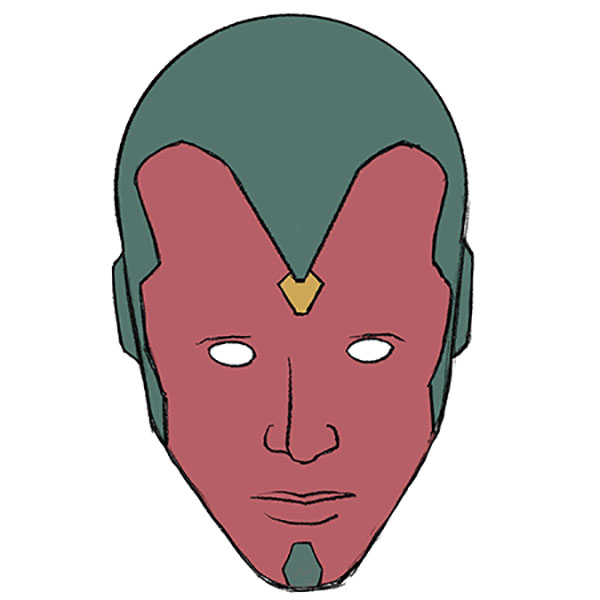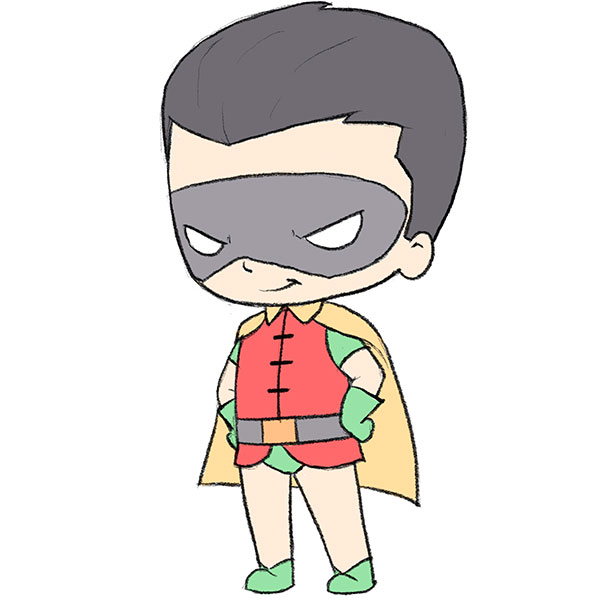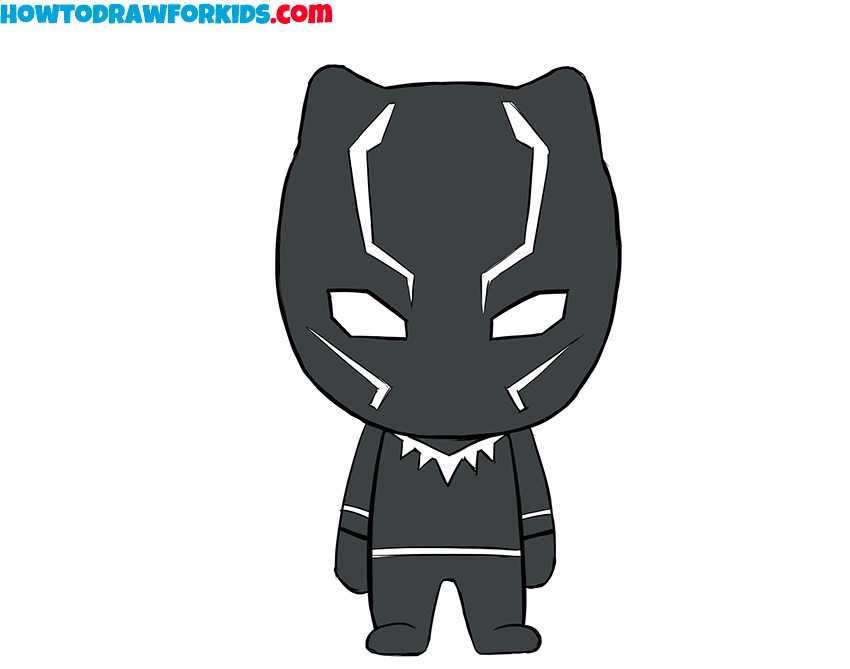How to Draw Two-Face
Ready your pencils for a delightful challenge – I’m going to guide you through how to draw Two-Face. This session is about transforming the complex villain into a simplified, charming version that captures hearts. With my guidance, you’ll master the whimsical chibi technique mixed with Two-Face’s iconic features.
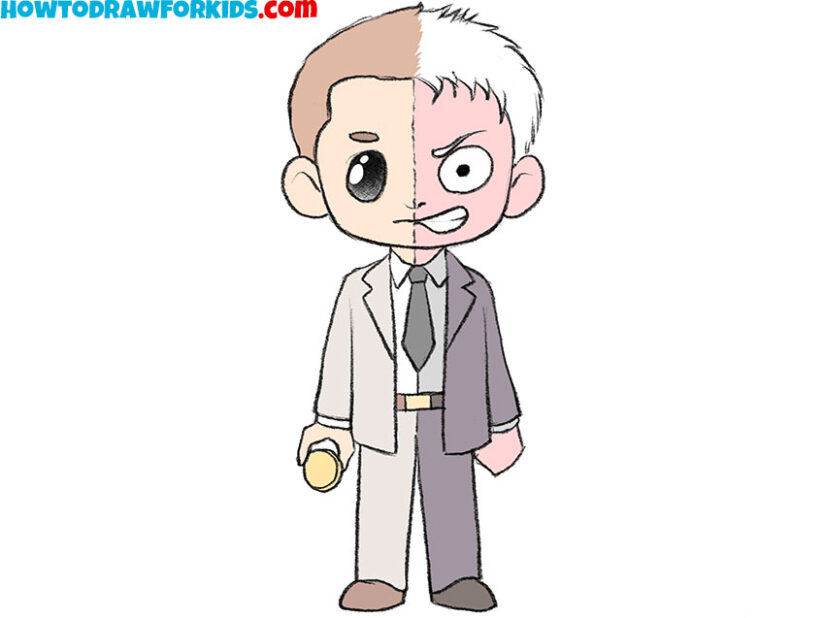
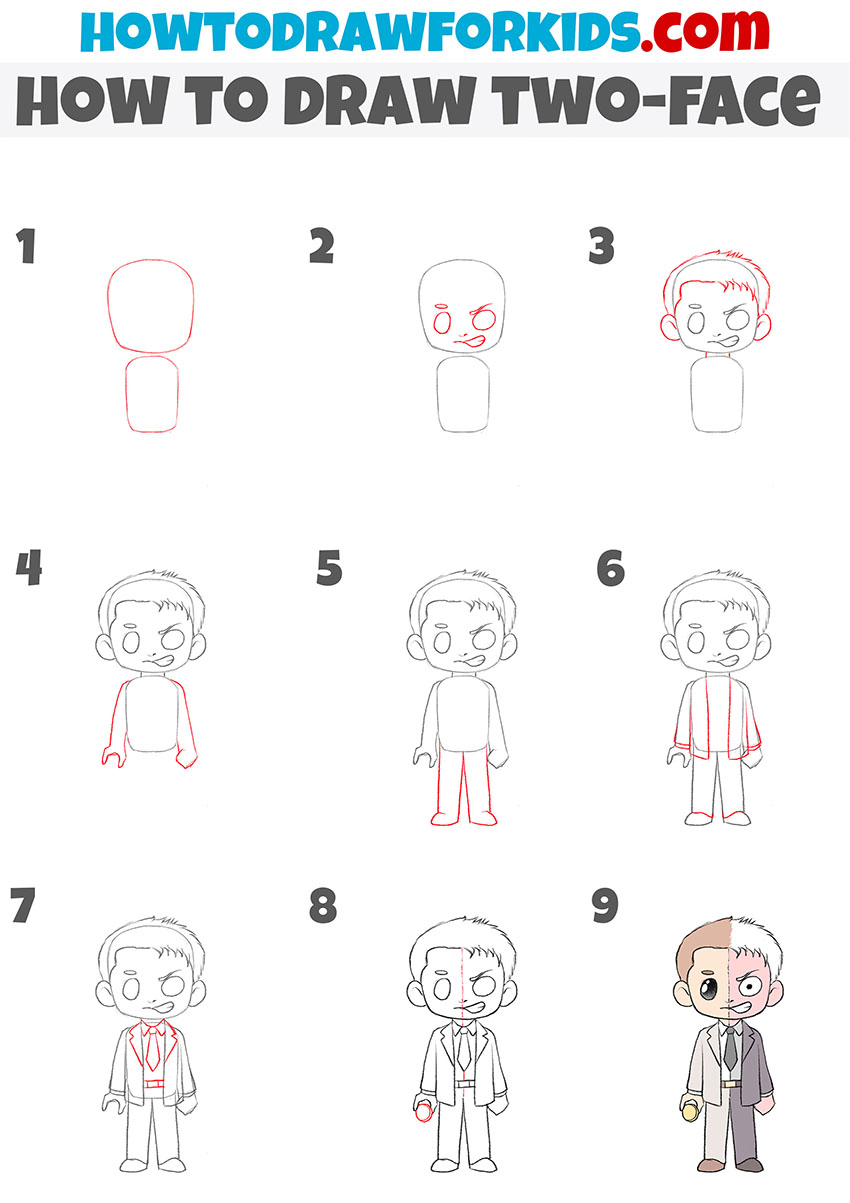
How to Draw Two-Face: Basic Information
Welcome, creative minds! In today’s lesson, I’ll unveil how to draw Two-Face in an adorable, chibi style. This guide is the product of my dedication to making drawing fun and simple. We’ll dive into the playful world of chibi art, all while capturing the complex duality of one of Gotham’s most memorable villains.
This drawing journey will tackle his unique attributes, from the notorious coin to his distinctive half-scarred suit. Each stroke will bring us closer to merging Two-Face‘s sinister and innocent sides in one miniature masterpiece. And it’s all presented in a way that’s approachable for artists at any level.
As we wrap up, you’ll find that to draw Two-Face effectively, attention to detail is key, even in chibi form. From the two-toned suit to the duality in his expressions, these elements are crucial. They bring together a character that’s both a delight to look at and a reflection of the classic comic book lore.
Two-Face Drawing Tutorial
Materials
- Pencil
- Paper
- Eraser
- Coloring supplies
Time needed: 22 minutes
How to Draw Two-Face
- Draw the head and body.
For the head, a simple oval shape is sketched, which provides a guideline for facial features. The body is represented with a cylindrical shape beneath the head, setting the proportions for the torso.
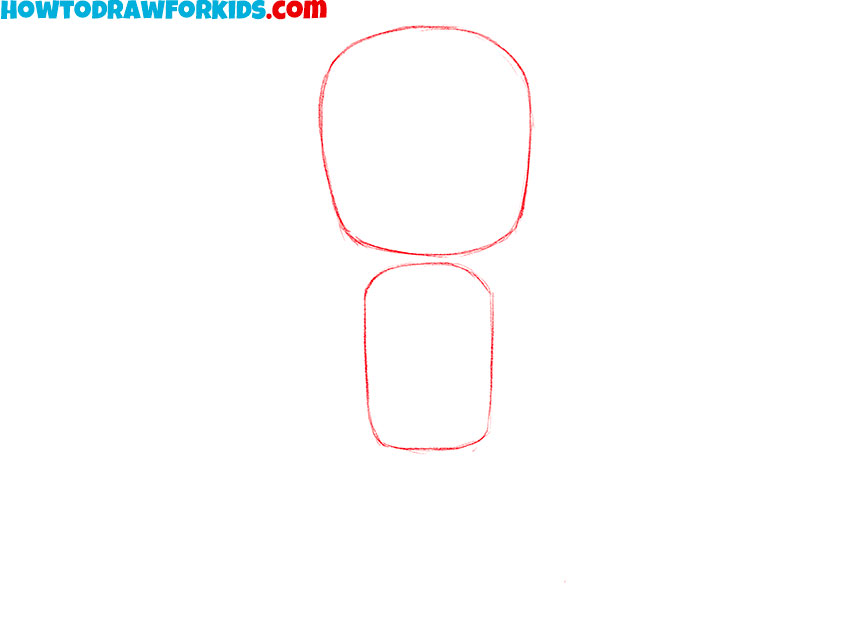
- Draw Two-Face’s facial features.
The expression is key here; even with cartoonish simplicity, it’s essential to convey the character’s split personality through the asymmetry in his facial features. The eyes should be even in size, but differ in expression.
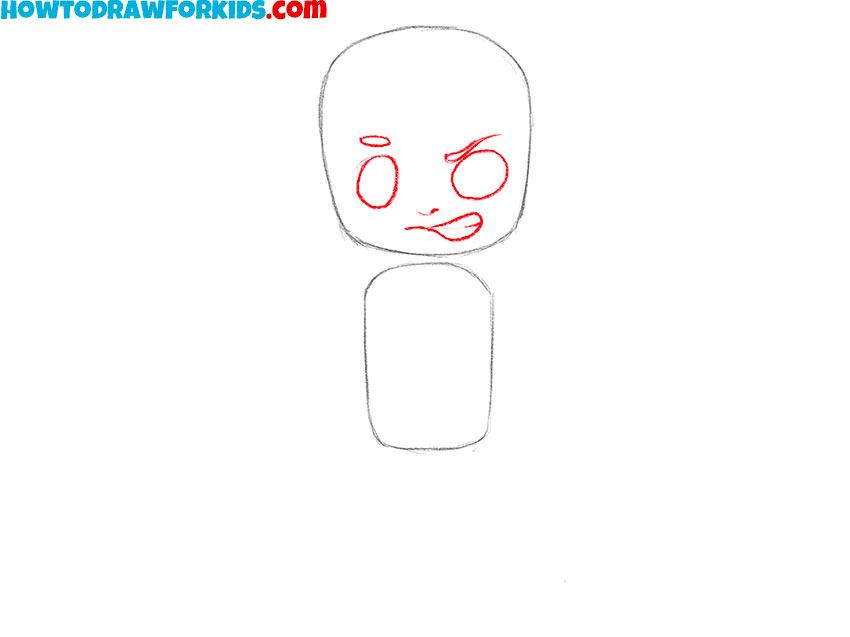
- Draw Harvey Dent’s hairstyle, ears and neck.
The hair is drawn with a loose, wavy line on the top of the head. The ears are placed in alignment with the eyes, ensuring that they are proportional to the head.
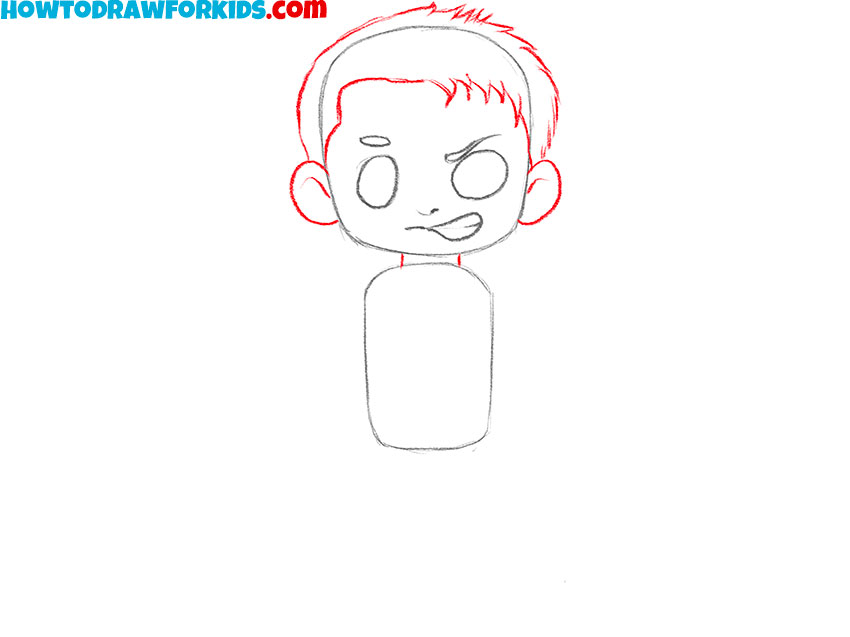
- Draw Two-Face arms.
The arms are drawn with simple lines flowing from the shoulder, creating the sleeves and indicating the hands resting at the hips. Even in a cartoonish style, it’s important to suggest the pose.

- Draw charecter’s legs.
The legs are drawn with two simple lines for each, indicating the trousers. Here, it’s important to maintain the correct proportions in relation to the rest of the body.
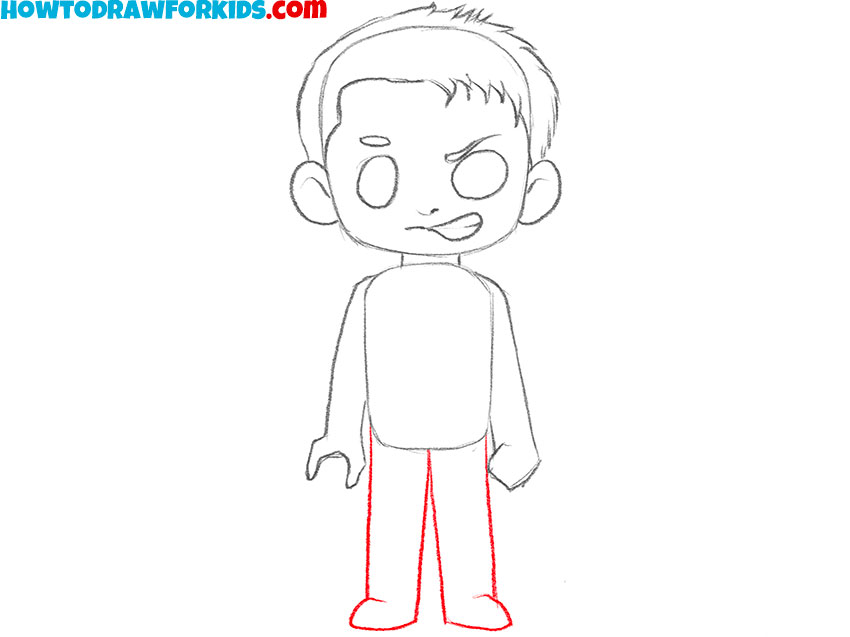
- Draw Two-face costume.
So, sketch out the basic lines of Harvey Dent’s costume. It looks like wide stripes that are located on the side of the body. The sleeves match the contours of the arms except for small areas at the hands.
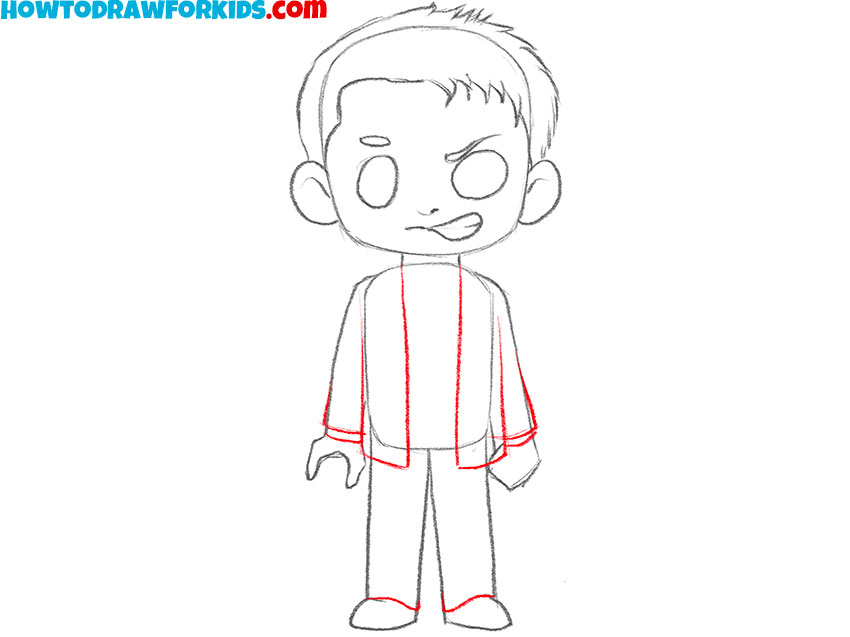
- Detail Two-face costume.
The tie is centered and falls straight down from the collar, and the vest is indicated with a V-shape neckline and buttons down the middle.
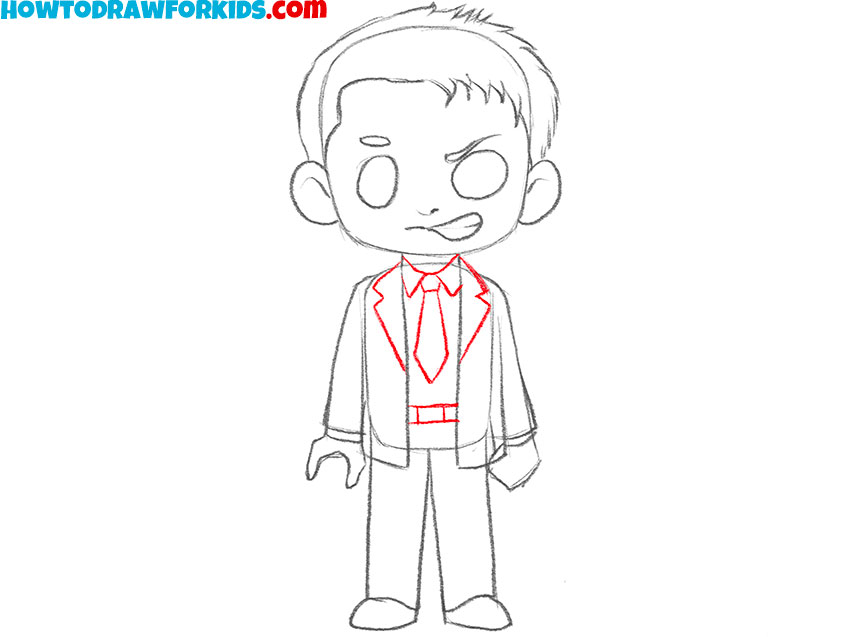
- Add a coin and dividing line.
The coin is a distinctive feature of the image of Two-Face. Draw a coin and add a dividing line for easier coloring. Use very light strokes for this action.
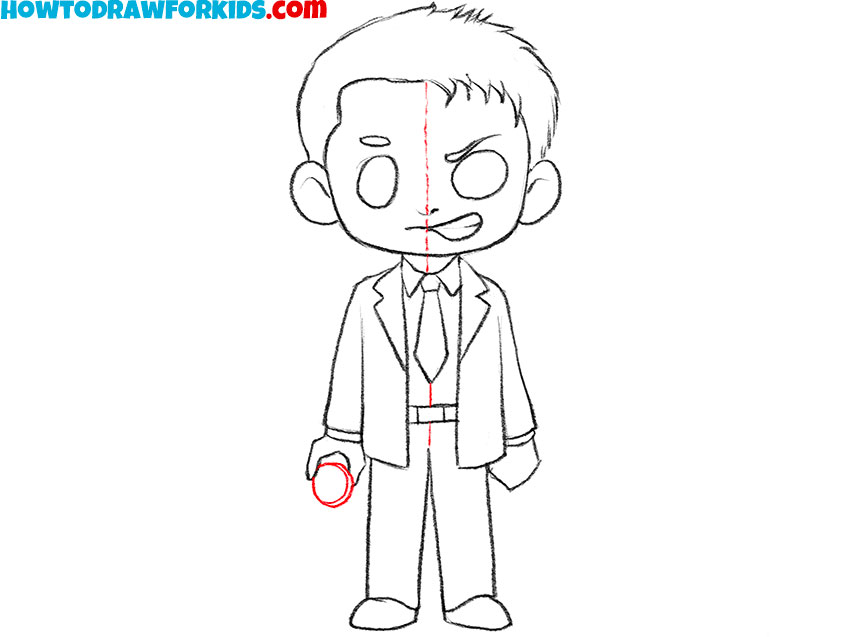
- Color the drawing.
Use different colors to create the different halves of Two-Face’s skin and eyes. Don’t forget about differences in the color of the suit and even shoes.

How to Draw Two-Face: Video Tutorial
Additional Content
I’ve complemented our drawing tutorial with a free PDF file, a distilled essence of our lesson to use anytime, internet or not. It’s ideal for reinforcing what you’ve learned and is especially handy for offline practice. This PDF is not a mere step-by-step guide; it contains additional materials tailored for skill enhancement after the core learning phase.
The PDF is a collection of exercises to advance your drawing finesse, focusing on the chibi art style nuances. It’s perfect for when you’re ready to build on the foundational techniques and add more personality to your drawings. This resource ensures you have the means to practice effectively, wherever you are.
Tap into this PDF as an invaluable tool for ongoing artistic development. It will support your journey in drawing a charismatic Two-Face, helping to perfect your strokes and expression. This resource aims to be your silent mentor, guiding your hand long after the main lesson ends.
Advanced Techniques for Chibi Two-Face
Every artist’s path is strewn with trials and errors, each mistake a stepping stone towards mastery. Recognizing and understanding these common pitfalls can dramatically enhance your skill and enjoyment of the art form. These insights aim to guide your practice, ensuring smoother sailing on your artistic endeavors.
- Overcomplicating Details: Attempting to include too much detail in a chibi character can clutter and detract from the overall effect. Remember, the charm of chibi lies in its simplicity and exaggerated features, especially for a character as complex as Two-Face.
- Neglecting Proportions: Even in chibi art, maintaining the correct proportions is essential. An overly large head is a hallmark of the style, but the body should still balance this, ensuring the character doesn’t look top-heavy.
- Inconsistent Lighting: Lighting and shading add depth to your drawing. A common mistake is applying inconsistent light sources, especially important for Two-Face to accentuate his dual nature.
- Ignoring Character Balance: Two-Face’s dichotomy is central to his identity. Failing to adequately represent the contrast between his two halves can result in a less impactful drawing.
- Forgetting the Essence of Chibi: Chibi characters are not just about being small and cute; they’re about capturing the essence of the character in a simplified form. Losing sight of Two-Face’s menacing yet tragic nature can diminish the expressiveness of your artwork.
- Using Harsh Lines Unintentionally: In chibi drawings, the line quality can convey a lot of emotions. Using harsh, unvarying lines throughout can make the drawing appear rigid and lifeless. Practice varying your line weight to add dynamism and softness where needed.
In wrapping up this exploration of common mistakes, let this knowledge serve not as a deterrent but as a beacon guiding your artistic journey. Each misstep is an invitation to pause, reflect, and adjust, propelling you forward with renewed insight and vigor. Embrace these lessons as integral to your development as an artist.
Two-Face Drawing Questions Answered
To address common inquiries, I’ve compiled a thoughtful selection of FAQs that you might also have throughout this lesson. This collection serves to clarify, inspire, and push the boundaries of your creative prowess, ensuring that your foray into chibi artistry is as enriching as it is enjoyable.
- Can I use a regular pencil for my chibi Two-Face drawing? Yes, a regular pencil is perfectly suitable for starting your chibi Two-Face sketch. However, consider varying your pencil grades to explore different shading and texturing effects, especially to differentiate between his two distinct halves.
- How do I make sure the two sides of Two-Face are distinct yet cohesive? Focus on the fundamental contrast between his sides through color, texture, and expression. Yet, maintain cohesion by ensuring that the overall shape and proportions adhere to the chibi style’s simplicity and charm.
- contrasting colors to emphasize his dual nature, choosing hues that reflect his complex character.
- Is it okay to simplify some details to fit the chibi style? Absolutely. Simplification is a key element of chibi art. Prioritize expressive features and emotions over intricate details, ensuring Two-Face’s essence is captured in a few, impactful elements.
As we wrap up this section of FAQs, let the answers serve as a beacon, illuminating your path through the enchanting realm of chibi drawing. May these insights empower you to approach each new drawing with confidence, curiosity, and an ever-deepening understanding of your craft.
Conclusion
Our tutorial on drawing Two-Face in a chibi style has concluded, yet the realm of creativity awaits with open arms on my site. There, you’ll find a diverse array of lessons, whether it’s capturing the essence of a bass fish or sketching a stylish baseball cap. I encourage you to delve into these artistic adventures to broaden your skills.
For those eager to keep abreast of the latest workshops and insights, following my social media is the key. Your feedback fuels our creative journey, so if you have any requests or ideas for future tutorials, do share them in the comments. Let’s continue to shape this vibrant community with each stroke of our pencils.

